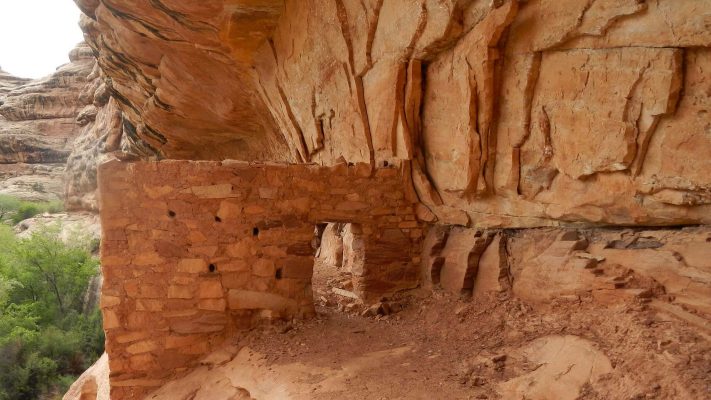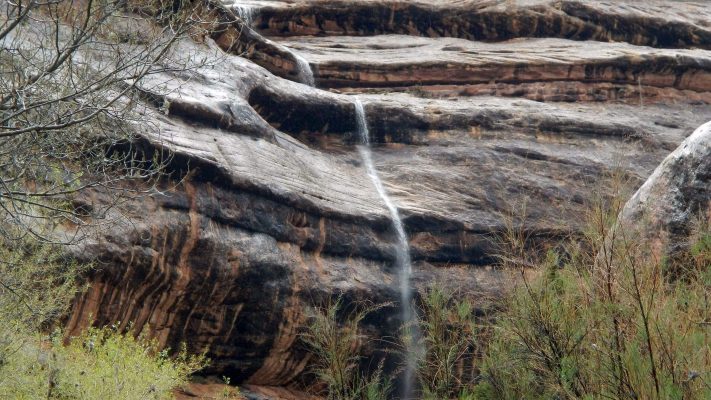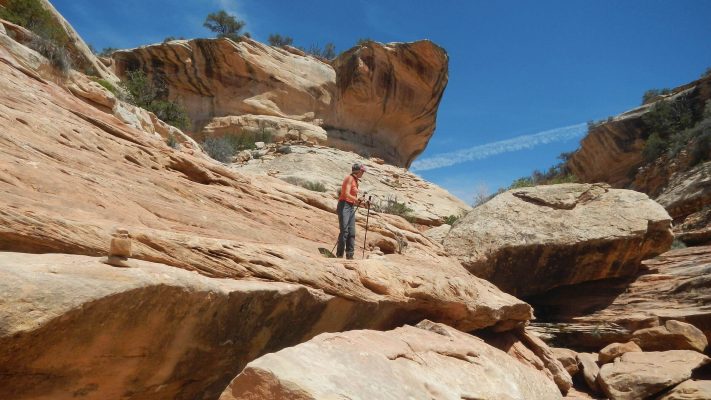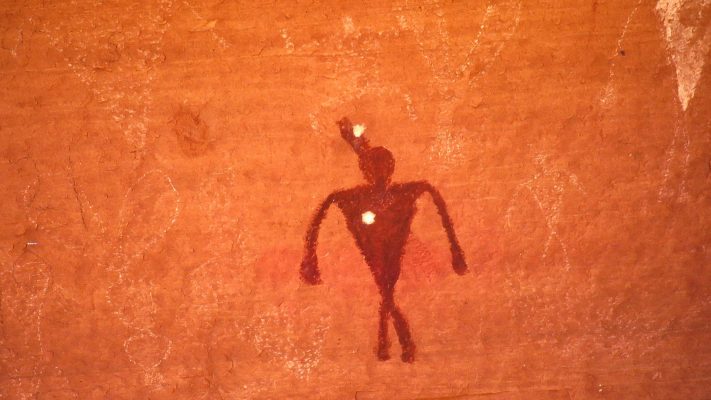I’ve posted an article on our recent revisit to Grand Gulch—a long canyon in southern Utah winding down from high mesas to the San Juan River and chock full of cliff dwellings, granaries, kivas and petroglyphs from a group of people now labeled “ancestral Puebloans” thought to inhabit the larger Grand Mesa area from about AD 1060-1270. Grand Gulch was among places we visited on spring pilgrimages to canyon country while living in Utah decades ago.
Grand Gulch dwellings and drawings still amaze and astound. But our mid-May 2019 revisit was quite the “Grand Surprise”—not in a good way.
In 1981, we hiked this sandy wash all the way to the San Juan River and back to Kane Gulch Ranger Station in probably a week or less.
In 2019, we did only the first 60 percent in about 4 days. Yes, we are older and slower. But the Gulch itself was another culprit—plus lack of information from the managing agency, Bureau of Land Management, on alternate hiking options.
In April 1981, the big hardship was hiking in a big sandy wash; we welcomed showers near end of trip that packed sand for easier slogging.
In May 2019, any flat sand (wet or dry) was welcome break from fighting vegetation or crawling up and down steep 4-6 foot “ditch bank” drop-offs for crossings to avoid hiking in water. After a relatively wet winter and spring throughout the West, rains continued in Southwest into May, which is generally a dry month. Upper part of Gulch was deep running trench clogged with non-native invasive salt cedar. A few ditch bank drops and my arthritic knees were done!
Routes across flood plains were tightly draped with non-native invasive grasses and curly dock, sometimes chest high. In day 3 rain, we donned rain gear and pack covers but this did not help our feet from wet vegetation that soaked our socks; we stopped repeatedly to drain little rivers from our boots. Although roaring cliff waterfalls were magnificent; rising muddy water made crossings much worse. David started throwing in rocks or tree limbs to help us negotiate the channel. We camped early to avoid a precarious crossing. Another group came by. The leader said they were worn out from crossings and wet brush—but grateful for our path through high grass. Already soaked, they just trudged into the knee-deep ditch, headed for the next flat spot for camp.
Conditions got better on day 4; rain quit, water receded and grass dried out by mid-day. We found more sandy-wash hiking, more as we remembered from 1981. But any time a spring or side canyon entered; the Gulch again filled with with running water and sometimes quicksand to negotiate.
Realizing we could not make it to the river and back in time allotted, we backtracked and exited mid-way, hiking along the mesa. We came out a day early so drove to a southern trailhead and day hiked further down the Gulch.
On our backtrack we met a person who was hiking the lower Gulch down to the last canyon before the river; which he said was a nice route out to the mesa and easy traverse back to his vehicle. Wish we had known about that option. But BLM publishes little information on hiking loops; and it’s hard to cobble together information from disparate website accounts.
Throughout the West, highly variable climate has stoked wildfires, replacing high mountain forests with dead falling trees, increased erosion and abundant brush resulting in trashed trails; making for slow going in many wilderness areas. In the Southwestern canyon country, variable climate appears to be changing stream channels and increasing non-native vegetation with similar result: not so fun to hike any more.
Although we loved the ruins and drawings that we saw (20 total), we missed some sites and natural features recorded in our 1981 photos. Perhaps higher canopy and vegetation blocked some views and/or rain and many canyon crossings distracted us.
Every time we missed a feature or had to backtrack, I amused David by proclaiming, “another Grand Disappointment.” Just kidding. Although surprising new conditions and poor upfront information hampered repeat trip plans, scenery and archeology of this unique area could never disappoint.





